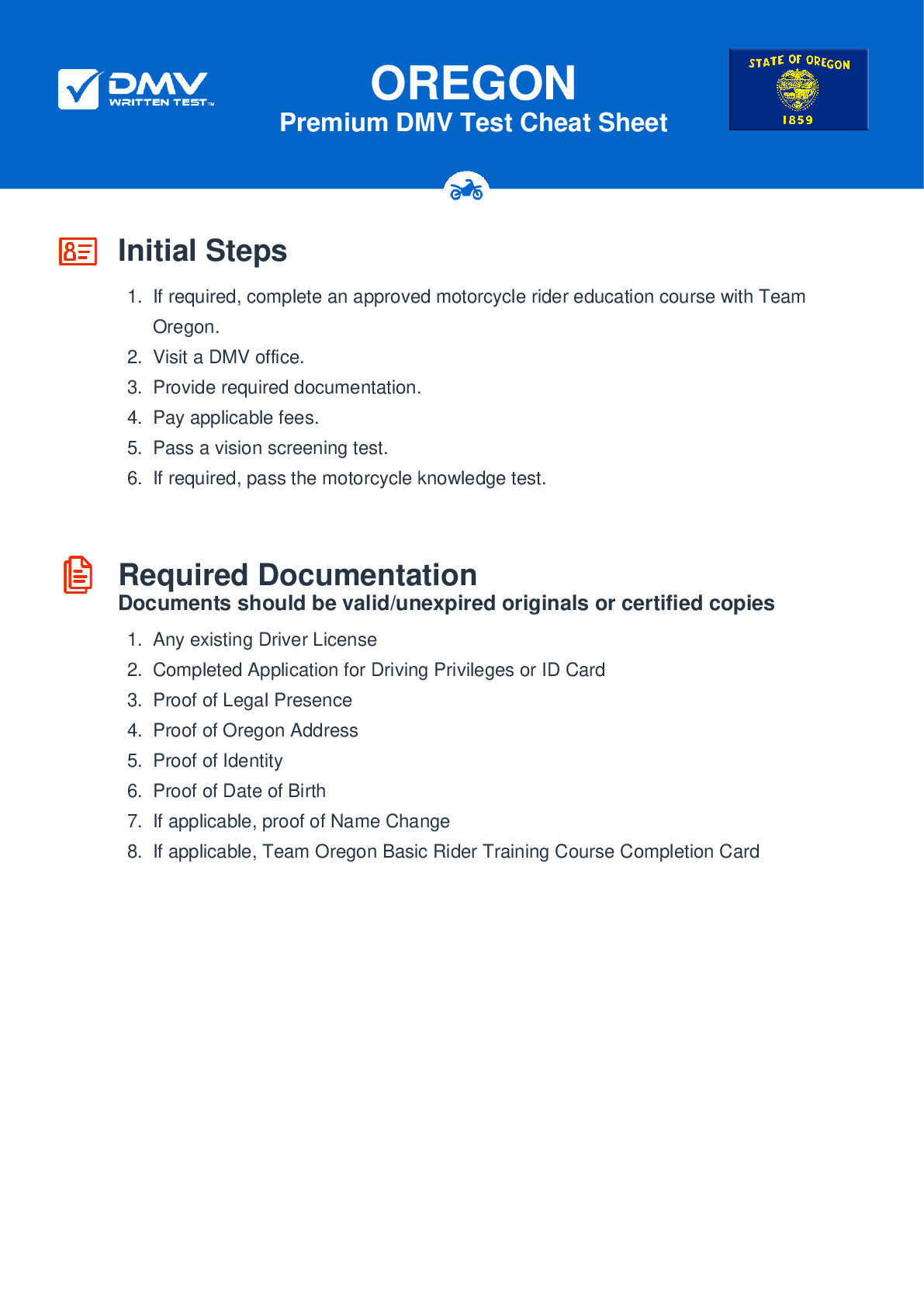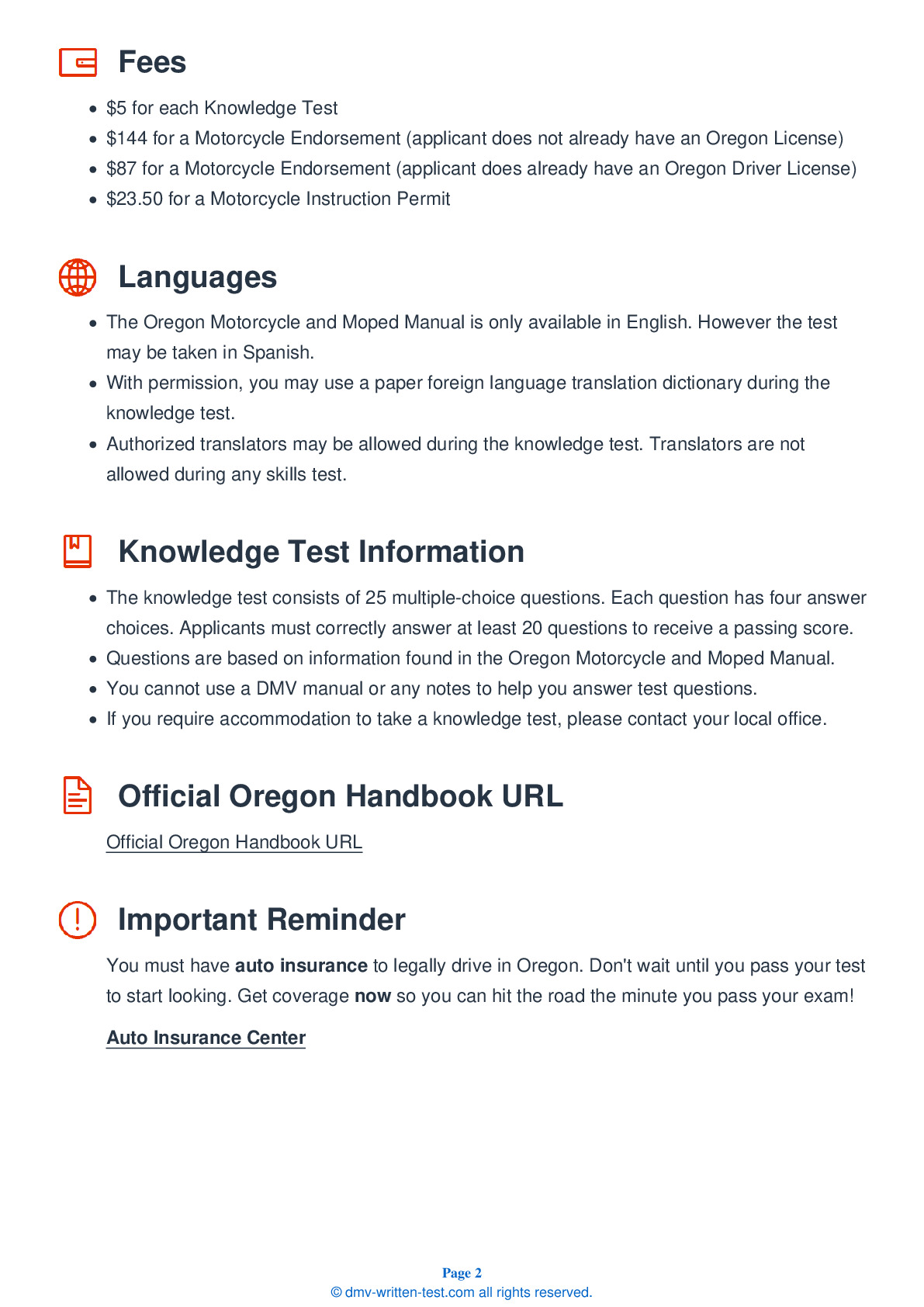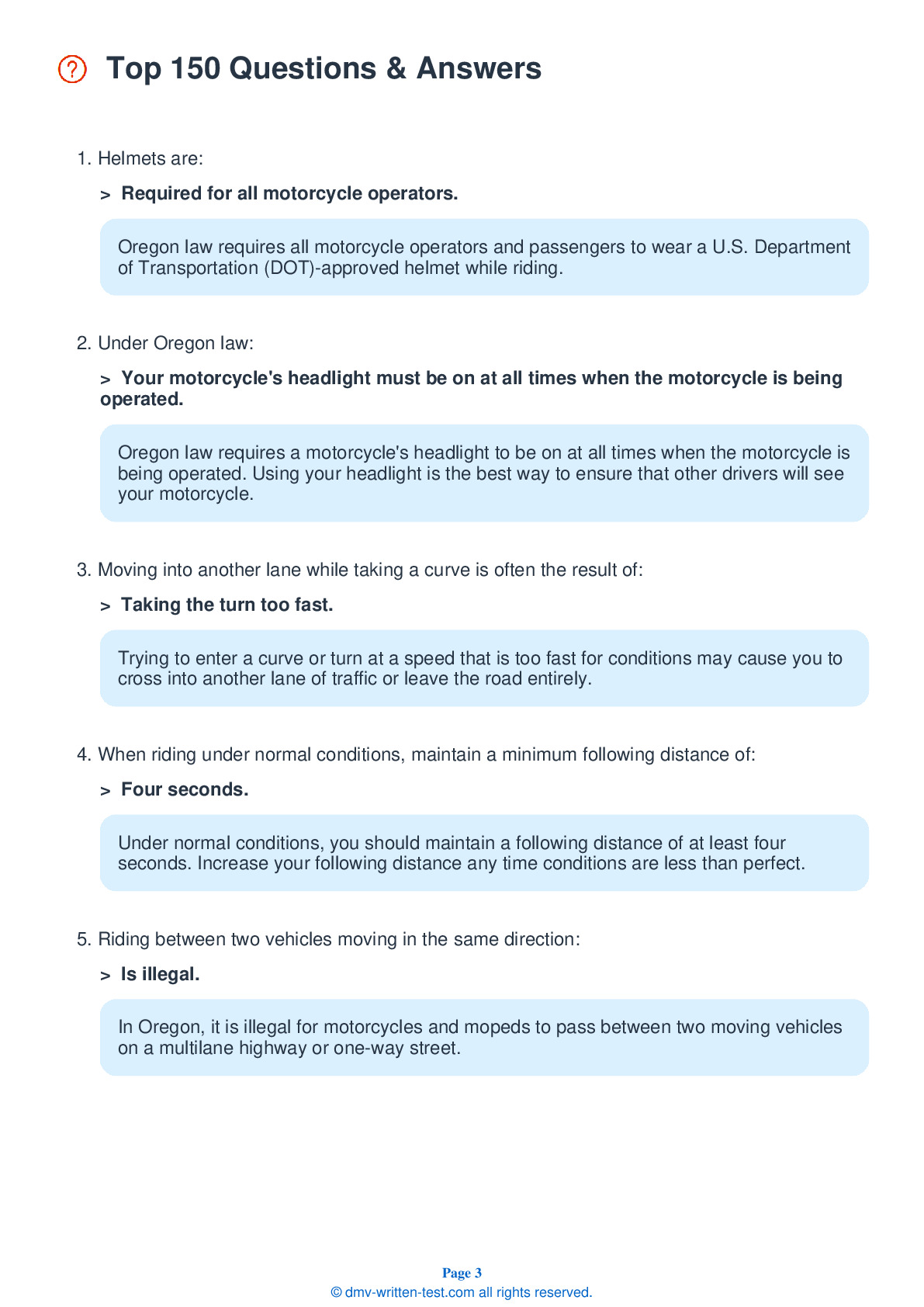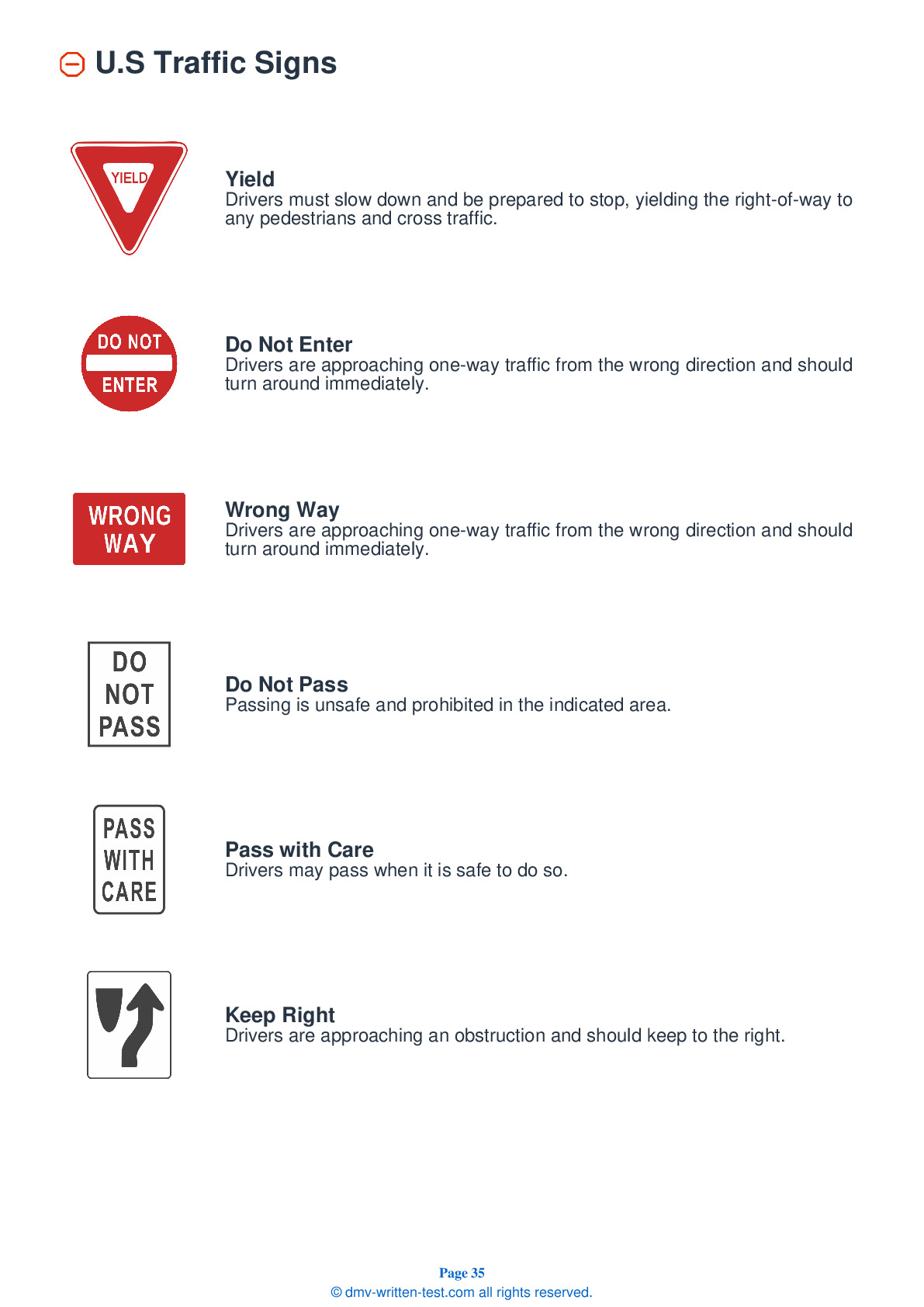2025 Oregon Motorcycle Permit Test 10
The following questions are from real DMV written motorcycle permit tests. These are some of the actual permit questions you will face in Oregon when getting your motorcycle learners permit. Each motorcycle theory practice test question has three answer choices. Select one answer for each question and select "grade this section." You can find this button at the bottom of the drivers license quiz. For a complete list of questions and answers for Oregon please visit https://cheat-sheets.dmv-written-test.com/en/oregon/motorcycle.
Number of Tests
Number of Question
Passing Score
19. When riding downhill on a motorcycle with a sidecar:
Explanation
Riding with a sidecar increases the weight of a motorcycle and increases the braking force needed to stop the motorcycle. Slowing and stopping take longer when riding a vehicle downhill than when riding on a flat surface.
20. A three-wheeled motorcycle:
Explanation
The cornering characteristics of a three-wheeled motorcycle or a motorcycle with a sidecar differ from those of a two-wheeled motorcycle.
21. A motorcyclist can discourage other vehicles from lane sharing by:
Explanation
Any time a driver may be tempted to try to squeeze into your lane next to you, ride in the center portion of the lane to discourage them from doing so.
22. How many alcoholic drinks need to be consumed before a rider may begin to feel the effects?
Explanation
As little as one alcoholic drink can affect a person's ability to ride. It is both illegal and dangerous to ride a motorcycle while under the influence of alcohol.
23. In any crash, you have a better chance of avoiding serious injury if you do all of the following, except:
Explanation
You can reduce your risk of injury when riding a motorcycle by wearing an approved helmet, face or eye protection, and protective clothing.
24. A helmet will not provide the best possible protection:
Explanation
A helmet should meet U.S. Department of Transportation (DOT) and state standards and fit snugly all the way around to provide maximum protection. It should be free of defects such as cracks, loose padding, or frayed straps.
25. Engine braking:
Explanation




